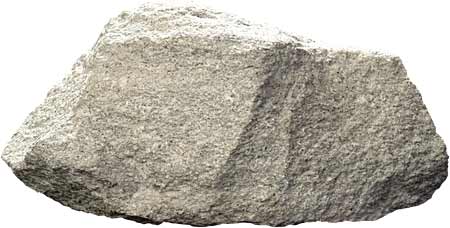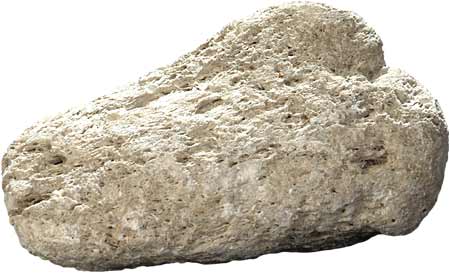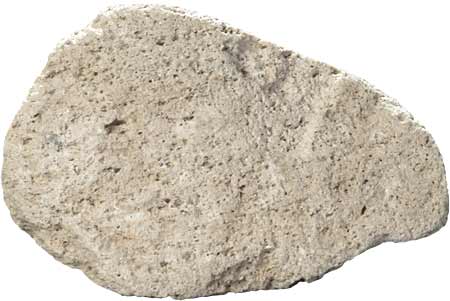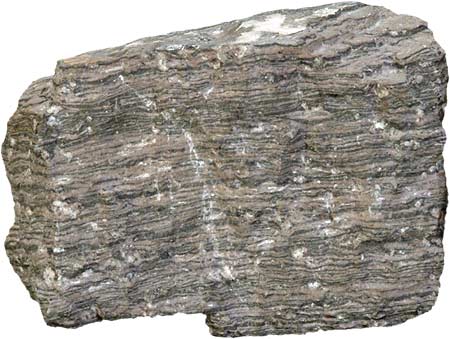Rhyolite
Rhyolite is a felsic extrusive rock. Due to the high silica content, rhyolite lava is very viscous. It flows slowly, like tooth paste squeezed out of a tube, and tends to pile up and form lava domes. If rhyolite magma is gas rich it can erupt explosively, forming a frothy solidified magma called pumice (a very lightweight, light-coloured, vesicular form of rhyolite) along with ash deposits, and / or ignimbrite. In certain situations extremely porous rhyolite lava flows may develop. The extreme porosity of such flows allows degassing and subsequent collapse of the flow, forming obsidian (dark coloured volcanic glass). Rhyolite is the volcanic equivalent of granite.
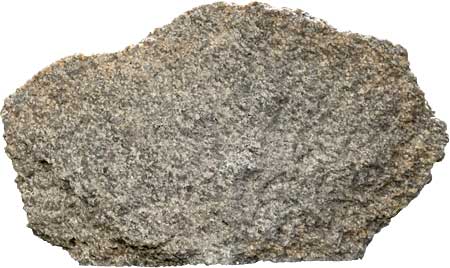
rhyolite |
Other specimens - Click the thumbnails to enlarge 





|
Colour - variable, but light coloured.
Texture - usually porphyritic, but can be aphanitic (e.g. obsidian).
Mineral content - groundmass generally of quartz and plagioclase, with lesser amounts of orthoclase, biotite, amphibole ( augite), pyroxene ( hornblende), and glass; phenocrysts of plagioclase and quartz, often with amphibole and / or biotite, sometimes orthoclase.
Silica (SiO 2) content - 69%-77%.
Uses - can be used as aggregate, fill etc. in the construction and roading industries (often not ideal for concrete aggregate because of high silica content); obsidian was used by pre-European Maori as a cutting tool, and can be carved into jewellery; pumice is used as an abrasive (especially in the cosmetic industry), and can also be incorporated into lightweight building materials.
New Zealand occurrences - Northland, Great Barrier Island, Coromandel Peninsula, Bay of Plenty, Rotorua-Taupo area (Taupo Volcanic Zone), minor occurrences on Banks Peninsula and the Canterbury Plains.


